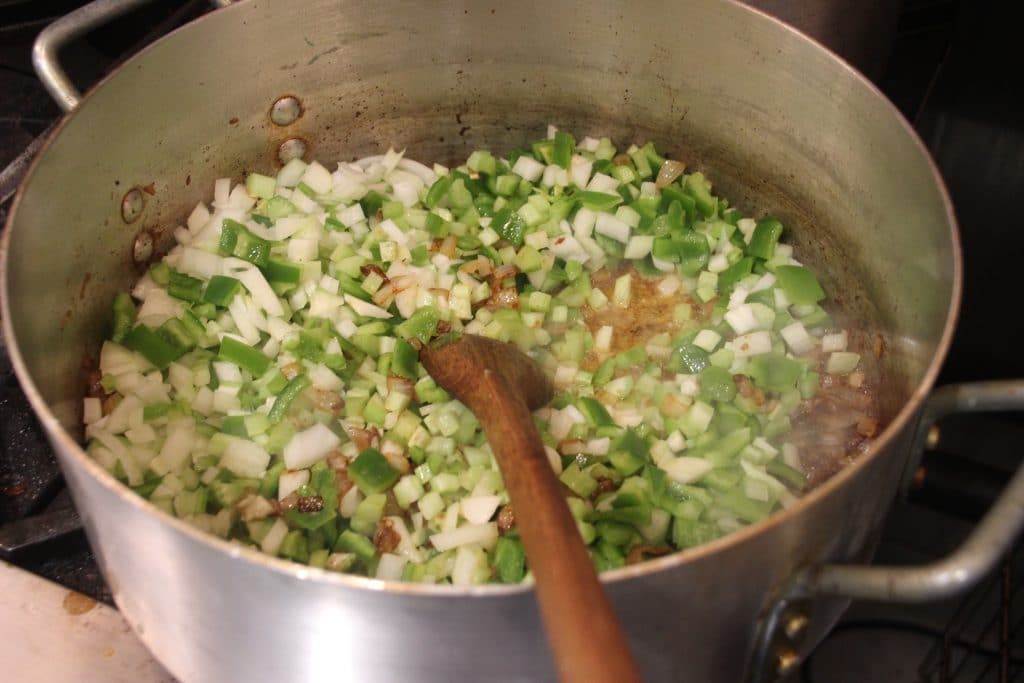Jambalaya is the perfect recipe when you have a crowd to feed. It is easy to make and can be inexpensive if you are on a budget, but I like to load it up, make it chunky like a big stew, with lots of spicy sausages and roasted chicken. It’s also a great, hearty dish for the fall and winter that is sure to please folks with serious appetites.
Its origins are a bit murky, but many local cooks will tell you that it evolved from Spanish paella. That’s the line I took for years until I recently read “On the Noodle Road: From Beijing to Rome, with Love and Pasta,” by Jen Lin-Liu. It’s a great little book, but it also tells us that folks all over the Orient have been making rice with a seasoned broth for countless years, and that is the basis of jambalaya.

Jambalaya starts out like a lot of Creole or Cajun dishes with sautéing the sausage you are going to use. Don’t be shy about how much sausage you use; jambalaya should be meaty! It also adds a nice fond to the pan, which means additional flavor, don’t you dare wash the pot after it is done. Once the sausage is nicely browned, remove it and set aside. Next is a long slow sauté of the Holy Trinity (onions, bell pepper, and celery), but we do not add okra. This is a crucial step and cannot be rushed, and, again, don’t be stingy, the veggies are another flavor base that will pay dividends later.
Please remember to season as you go! I suggest Tony Chachere’s Creole Seasoning and a good pinch of red pepper flakes. Take your time and simmer the veggies until they are reduced in volume by 40 percent.
The next step is the chicken. This is a point where you can take a shortcut and buy a rotisserie chicken or two, but roasting off a few chicken thighs will do just as well. Debone the chicken and add the bones and scraps to chicken stock, you can also add any scraps from the vegetables, it will be strained off later. The last step is to combine veggies, chicken, sausage and stock and rice, lid on, and cook until the rice is done. Remember to use a ratio of 3 to 1 for the rice and stock. You want it to be a bit wet, not too dry. The real dilemma is the addition of shrimp. If you add shrimp in the last step, they will be overcooked. If you don’t mind shrimp being a bit tough, go for it. I’d rather sauté the shrimp separately and combine all at the end.
I love jambalaya and make mine a bit spicy. It’s a personal choice, but I like the depth and spice that red pepper flakes add. But let me give you fair warning, if you try my jambalaya and I catch you adding hot sauce to yours, you won’t be invited back! Hot sauce overpowers all the flavors I worked so hard to get right.